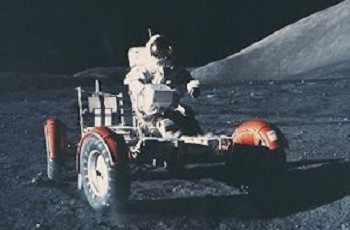Four of these cars were made, and for each minute they were driven for their intended purpose, they cost over $58,000. NASA’s Lunar Roving Vehicle (LRV-Lunar Roving Vehicle) was known as the Moon Buggy, and the most expensive “Rover” ever built! Maybe fittingly, Americans were the first to drive on the Moon.

Nasa Lunar Roving Vehicle 1971
- YEAR REVEALED 1971
- PLACE OF ORIGIN Kent, Washington
- HISTORICAL STATUS quasiproduction vehicle
- ENGINE four electric motors
- MAXIMUM POWER unknown
- LAYOUT engines mounted in the wheel hubs driving all four wheels
- BODYWORK doorless, single-seater buggy
- TOP SPEED 8mph (13kph)
- NUMBER BUILT four
One Lunar Roving Vehicle was even involved in a minor accident. When one of the Rover’s fenders became detached, astronauts used tape to fix it back on, so severe was the dust cloud without it. Wheeled-transport to give astronauts a wider Moon range was first envisaged in the early 1960s by NASA rocket scientist Dr. Wernher von Braun.
In July 1969, two weeks before the epoch-making Apollo 11 mission, tenders to build a suitable vehicle were invited. The $19.6 million contract was won by Boeing and subcontractor General Motors, in time for Apollo 15 by April 1971. The aluminum rover was compacted for the space journey, its wheels folding out in the automated unloading process.
Its articulated chassis had front and rear steering for maximum maneuverability, and woven steel thread tires with titanium treads for best grip. Electric motors were fed by high-energy batteries. The Lunar Roving Vehicle was controlled by a T-shaped joystick, and Velcro seatbelts were provided.
The umbrella-like antenna beamed live footage back to Mission Control during the vehicles’ sample and data-gathering forays. Four LRVs were built and first drove on the Moon on July 31, 1971. Between them they covered 56 miles (90km).